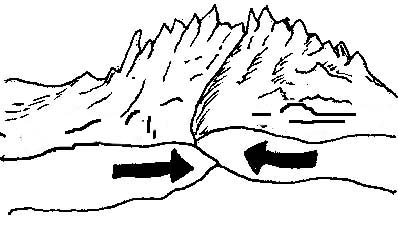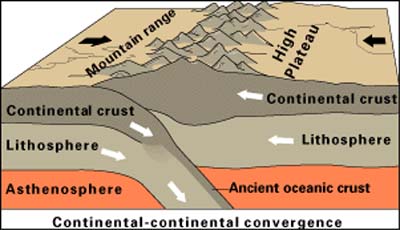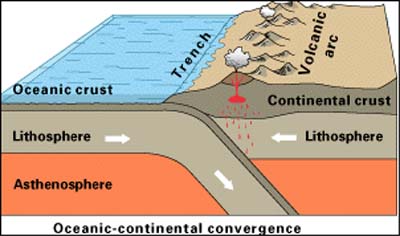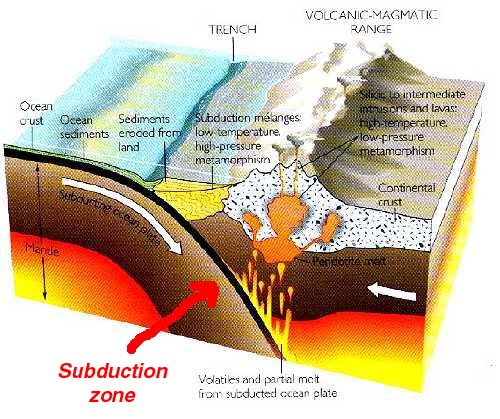Plate Tectonics - Convergent Plate Boundaries
| Convergent type boundaries can interact in three different ways, depending on the make of the lithospheric plates (continental or oceanic): |
 |
| Continental - Continental convergence - Here since both plates have the same density neither is subducted because the continental rocks are relatively light and, like two colliding icebergs, resist downward motion. Instead, the crust tends to buckle and be pushed upward or sideways. This is how mountains form. |
 |
| Oceanic – Oceanic convergence - When two oceanic plates converge one is usually subducted under the other and in the process a deep oceanic trench is formed. The Marianas Trench, for example, is a deep trench created as the result of the Phillipine Plate subducting under the Pacific Plate. |
 |
| Continental - Oceanic convergence - When an oceanic plate pushes into and subducts under a continental plate, the overriding continental plate is lifted up and a mountain range is created. Even though the oceanic plate as a whole sinks smoothly and continuously into the subduction trench, the deepest part of the subducting plate breaks into smaller pieces. These smaller pieces become locked in place for long periods of time before moving suddenly and generating large earthquakes. This type of interaction will create what is a SUBDUCTION ZONE |
 |
| Subduction zone – A boundary along which a more denser oceanic plate descends into the mantle beneath a less dense continental plate. |
 |
 |
 |
Brooklyn College - Geology Department